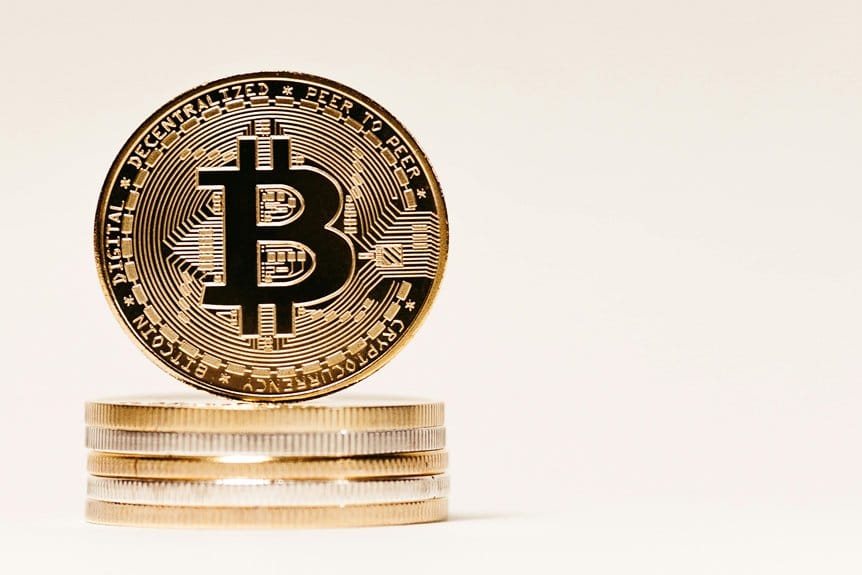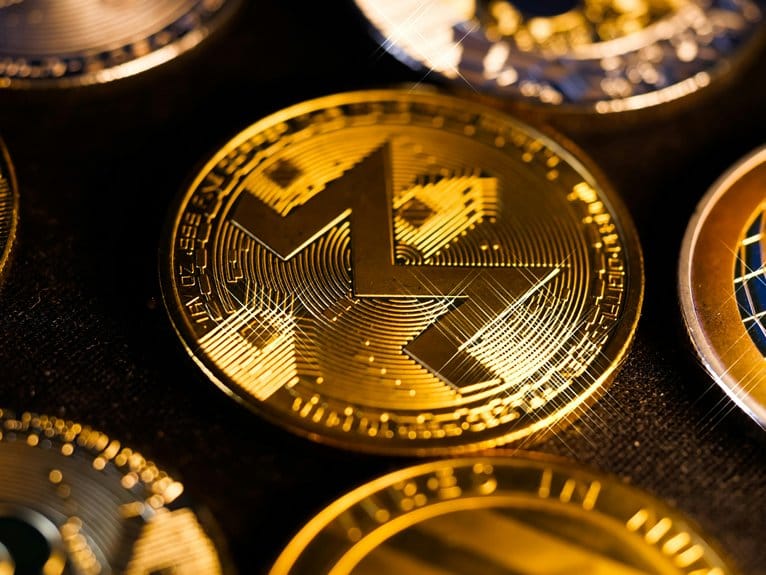The integration of IoT and blockchain technologies creates a powerful synergy for secure, automated data management. IoT devices generate massive volumes of sensor data, while blockchain provides a decentralized, immutable ledger system for secure storage and validation. Smart contracts enable autonomous operations and automated decision-making across distributed networks, while cryptographic protocols ensure device authentication and data integrity. This convergence enhances supply chain traceability, urban infrastructure management, and environmental monitoring capabilities. Though scalability challenges exist, multi-layered approaches combining edge computing with optimized consensus mechanisms point toward increasingly robust implementation strategies that will shape future technological infrastructures.
Understanding IoT and Blockchain Basics
Building upon fundamental computing technologies, the Internet of Things (IoT) and blockchain represent two transformative digital innovations that have reshaped modern technological infrastructure. IoT devices create interconnected networks of sensors and smart objects that generate massive volumes of data, while blockchain technology provides a decentralized, immutable ledger system for secure data management and verification.
The convergence of these technologies addresses critical data interoperability challenges through standardized network protocols and communication frameworks. IoT devices utilize various protocol standards for seamless integration, enabling real-time analytics and automated decision-making processes across distributed systems.
Meanwhile, blockchain's cryptographic foundation ensures secure device authentication and maintains data integrity throughout the network.
Privacy concerns remain paramount as IoT deployments expand globally. Blockchain's inherent security features, including consensus mechanisms and encrypted transactions, provide robust protection for sensitive IoT-generated data.
This integration creates a scalable architecture where devices can autonomously interact, verify, and exchange information while maintaining security protocols. The combination establishes a foundation for trustworthy device-to-device communications, automated smart contracts, and verifiable data trails across complex IoT ecosystems.
Security Benefits of Combined Technologies
The integration of IoT and blockchain technologies yields multiple security advantages that strengthen overall system resilience. By implementing decentralized identity protocols, organizations can establish robust trust models that enhance device authentication and validate data integrity across IoT networks. This architectural approach significantly improves threat mitigation capabilities while maintaining stringent data privacy standards.
Blockchain's inherent security features provide comprehensive access control mechanisms for IoT ecosystems. Through cryptographic validation and immutable record-keeping, the system enables secure communication between devices while ensuring regulatory compliance. Real-time monitoring of network activities becomes more reliable as blockchain timestamps and verifies each transaction, creating an auditable trail of device interactions.
The combined technologies address critical vulnerabilities in traditional IoT deployments through enhanced identity management protocols. By distributing authentication processes across the network, the system reduces single points of failure and strengthens defense against unauthorized access attempts.
This framework enables organizations to maintain granular control over device permissions while simultaneously protecting sensitive data through encrypted channels, establishing a more resilient security infrastructure that meets modern cybersecurity demands.
Smart Contracts for IoT
Smart contracts serve as programmable intermediaries that automate and enforce predefined rules within IoT networks, enabling secure and transparent device-to-device interactions without manual intervention.
These trustless systems facilitate IoT automation by executing predefined conditions when specific triggers occur, ensuring consistent and reliable operations across connected devices.
The integration of smart contracts with IoT devices creates programmable assets that can autonomously engage in complex transactions while maintaining data privacy.
Device interoperability is enhanced through standardized contract protocols, allowing diverse IoT endpoints to communicate and execute actions seamlessly. This standardization significantly improves transaction speed and reduces operational overhead.
Decentralized applications built on smart contract frameworks enable IoT networks to operate with enhanced security and reduced single points of failure.
The immutable nature of blockchain-based smart contracts ensures that device interactions are permanently recorded and verifiable.
Implementation challenges include optimizing contract execution for resource-constrained IoT devices and establishing standardized protocols for different device types.
However, the benefits of automated compliance, reduced administrative costs, and increased operational efficiency make smart contracts an essential component of modern IoT architectures.
Supply Chain Management Applications
Blockchain-enabled supply chain management revolutionizes traditional tracking systems by implementing IoT sensors and smart contracts to monitor product journeys from origin to destination. Through integrated sensor networks, organizations can maintain comprehensive traceability solutions that provide real-time visibility into asset tracking and inventory management processes.
The combination of blockchain and IoT enables real-time monitoring of environmental conditions, location data, and product integrity throughout the supply chain. These systems utilize predictive analytics to forecast potential disruptions, optimize routing, and enhance cost optimization efforts. Organizations can proactively identify bottlenecks, reduce waste, and streamline logistics operations through automated data collection and analysis.
Risk assessment capabilities are significantly enhanced through the decentralized nature of blockchain technology coupled with IoT sensor data. This integration allows supply chain stakeholders to verify product authenticity, maintain compliance records, and respond swiftly to potential issues.
Advanced inventory management systems leverage this data to automate reordering processes, maintain optimal stock levels, and reduce carrying costs. The resulting transparency and efficiency gains enable organizations to build more resilient supply chains while ensuring product quality and authenticity throughout the distribution network.
Data Integrity and Validation
Leveraging cryptographic validation mechanisms, integrated IoT and blockchain systems establish robust data integrity frameworks that verify and authenticate information across distributed networks. Trust mechanisms embedded within these systems ensure data authenticity through multilayered verification processes, while consensus algorithms validate each transaction before permanent recording.
The integration of tamper-resistant protocols safeguards against unauthorized modifications, establishing immutable audit trails. Sensor reliability in IoT devices is enhanced through blockchain's distributed architecture, which implements continuous validation checkpoints and data provenance tracking. Each data point undergoes rigorous verification before being added to the chain, creating a transparent and traceable record of information flow.
These systems employ sophisticated cryptographic techniques to maintain data integrity from source to destination, ensuring that information remains both accurate and trustworthy. The combination of IoT sensor data with blockchain's inherent security features creates a self-validating ecosystem where data authenticity is continuously monitored and verified.
This architecture enables organizations to maintain comprehensive audit trails while ensuring that data remains immutable and verifiable throughout its lifecycle, effectively addressing traditional challenges in data integrity and validation.
Decentralized IoT Networks
Decentralized architectures revolutionize traditional IoT networks by distributing computational resources, data storage, and decision-making capabilities across multiple nodes rather than relying on centralized servers. This approach enables interoperable devices to communicate directly through peer-to-peer connectivity, reducing latency and single points of failure while enhancing network resilience.
The implementation of decentralized governance models allows IoT networks to operate autonomously through consensus mechanisms and smart contracts. Edge computing capabilities are distributed across the network, enabling real-time data processing and analysis closer to the source. This distribution of resources is often supported by tokenized incentives, encouraging network participants to contribute computational power and storage capacity.
Privacy protocols play a crucial role in securing decentralized IoT networks, implementing end-to-end encryption and granular access controls. These protocols ensure data sovereignty while maintaining autonomous operations across the network.
The combination of distributed resources and robust security measures creates a self-sustaining ecosystem where devices can interact, share data, and execute operations without central authority intervention, significantly improving scalability and operational efficiency.
Smart Cities and Infrastructure
Modern smart cities harness the potential of decentralized networks to create interconnected urban ecosystems that optimize resource allocation and enhance citizen services. Through the integration of IoT sensors and blockchain technology, municipalities can implement comprehensive urban mobility solutions that reduce traffic congestion and optimize public transportation routes based on real-time analytics.
These systems simultaneously monitor energy efficiency across city grids, enabling dynamic load balancing and reduced power consumption.
Smart infrastructure implementations extend to automated waste management systems, where sensor-equipped containers communicate fill levels and optimize collection routes. Infrastructure resilience is enhanced through predictive maintenance protocols that detect potential failures before they occur.
Environmental monitoring stations across the urban landscape capture air quality, noise levels, and weather patterns, feeding this data into distributed ledgers for transparent record-keeping and analysis.
Public safety systems benefit from integrated surveillance networks and emergency response coordination, while citizen engagement platforms enable direct participation in urban governance through secure, blockchain-verified voting and feedback mechanisms.
This technological framework creates a data-driven approach to urban management, where every infrastructure component contributes to a more efficient, sustainable, and responsive city environment.
Scalability Challenges and Solutions
The exponential growth of IoT networks presents significant scalability hurdles for blockchain integration, particularly in processing high-volume sensor data and managing network congestion.
Network latency and data throughput limitations pose critical challenges as IoT deployments expand, necessitating innovative solutions for efficient resource allocation across distributed systems.
To address these constraints, developers are implementing multi-layered approaches combining edge computing architectures with optimized consensus mechanisms.
These solutions enable localized data processing and reduce blockchain transaction overhead.
Device interoperability challenges are being tackled through protocol standardization initiatives, ensuring seamless communication between diverse IoT endpoints and blockchain networks.
Advanced storage solutions, including off-chain data management and sharding techniques, help manage the growing volume of IoT-generated data while maintaining blockchain security.
Implementation of lightweight consensus protocols specifically designed for IoT environments has shown promising results in reducing computational overhead while maintaining network integrity.
Performance metrics indicate that hybrid architectures leveraging both centralized and decentralized components can achieve up to 70% improvement in transaction processing speeds while ensuring adequate data validation and security measures remain intact.
Future Integration Opportunities
Emerging convergence points between IoT and blockchain technologies reveal numerous promising integration pathways across multiple sectors. The fusion of predictive analytics with blockchain-secured IoT data streams enables sophisticated forecasting models while maintaining data integrity.
Edge computing implementations, when combined with distributed ledger architectures, significantly reduce latency and enhance real-time monitoring capabilities for industrial applications.
Interoperability standards are evolving to accommodate this technological merger, with organizations developing unified protocols that facilitate seamless device authentication across diverse IoT ecosystems. These standards incorporate robust regulatory frameworks to address user privacy concerns while enabling cross-platform data exchange.
Energy efficiency improvements are being realized through smart contracts that optimize resource allocation and automate device management protocols.
The integration landscape is particularly promising in sectors such as supply chain management, where blockchain-verified IoT sensors enable unprecedented transparency in real-time monitoring systems.
Healthcare applications are leveraging this convergence for secure patient data management, while smart cities are implementing integrated solutions for infrastructure monitoring and resource optimization.
These developments indicate a trajectory toward more secure, efficient, and interconnected systems that balance technological advancement with privacy protection.
Frequently Asked Questions
How Much Energy Do Iot-Blockchain Systems Consume Compared to Traditional Networks?
IoT-blockchain systems typically consume 15-30% more energy than traditional networks, though advanced network optimization and energy efficiency improvements are steadily reducing this gap through smart resource allocation protocols.
Can Existing Iot Devices Be Retrofitted With Blockchain Capabilities?
Most IoT devices can be retrofitted through firmware updates or external modules, though security challenges persist. Retrofit strategies include implementing lightweight blockchain protocols and edge computing solutions for resource-constrained devices.
What Programming Languages Are Most Suitable for Iot-Blockchain Development?
Solidity dominates smart contracts development, while Python and JavaScript handle IoT interactions. C++ and Go offer robust data privacy implementations. Rust provides memory safety for critical blockchain-IoT applications.
How Do Iot-Blockchain Systems Handle Intermittent Internet Connectivity Issues?
IoT-blockchain systems employ edge computing for local data processing and cached storage during outages, implementing sophisticated data synchronization protocols when connectivity resumes to maintain blockchain integrity and consistency.
What Are the Hardware Requirements for Running Iot Nodes on Blockchain?
IoT nodes require sufficient processing power, memory (minimum 4GB RAM), storage capacity, and reliable network connectivity. Node specifications vary by blockchain type, with security considerations demanding tamper-resistant hardware and encryption capabilities.
Conclusion
The convergence of IoT and blockchain technologies represents a transformative advancement in digital infrastructure. The integration enables enhanced security protocols, automated smart contracts, and decentralized data validation systems. While scalability challenges persist, emerging solutions in consensus mechanisms and edge computing demonstrate promising potential. This technological synthesis continues to drive innovation in smart cities, supply chain management, and industrial automation, establishing a foundation for future digital ecosystems.





